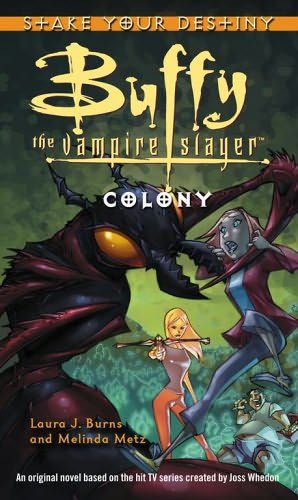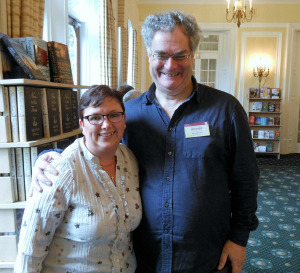 Myself and Michael Jones at the Harrogate History Festival, October 2015
Myself and Michael Jones at the Harrogate History Festival, October 2015
Today it is a pleasure to welcome historian and broadcaster Michael Jones to the blog.
Hi Mike, thank you so much for agreeing to an interview for my blog History…the Interesting Bits. The last time we chatted was at the Harrogate History Festival a couple of years ago. I seem to remember asking you to convince me that Henry IV and Henry V were worth reading up on. I must say, your own arguments and your book 24 Hours at Agincourt certainly piqued my interest; all 3 of Henry IV’s sisters will appear in my book. And your latest book is a biography of Edward III’s eldest son, The Black Prince. I don’t need any convincing with him, he’s a fascinating character and I am really enjoyed reading your book.
And so, without further ado, to the interview. I hope the questions are not too onerous for you.
What do you love most about history?
Well, firstly, hello Sharon and thank you for your blog and website, and your enthusiasm for all things medieval. And good luck with your own book!
As a child, I loved history for its portrayal of men and women in challenging circumstances. I was fascinated by how they were – sometimes at least – able to triumph against all the odds. Now, as a historian, it is still those personal stories I am most drawn to. I wanted to write a biography of Margaret Beaufort, the mother of Henry VII (The King’s Mother) because she showed such courage and resourcefulness in adversity – and it was through this that I got to know Philippa Gregory, first advising her on her book The Red Queen, and then writing with her and David Baldwin The Women of the Cousins’ War. And in my most recent work, The Black Prince – a biography of Edward of Woodstock (the oldest son of Edward III and foremost military commander of his age) – I have enjoyed depicting the Prince’s charisma as a leader, the way he forged a remarkable esprit de corps amongst his fellow fighters.
What is your favourite period of history – and why?
I write on a number of subjects – ranging from the late middle ages to World War Two – and, as a tour guide, lead military and cultural tours covering many historical eras. But the reason I focus on the late middle ages is because of the quality of teaching I received at Bristol University (as an undergraduate and postgraduate), particularly from Charles Ross and James Sherborne. They shaped my abilities as a historian and I remain grateful to them to this day. And the fourteenth and fifteenth centuries are tumultuous yet vivid times, marred by plague and warfare yet possessing an acute sensibility to beauty and the uplifting power of ritual and display.
Which historical personality fascinates you the most – and why?
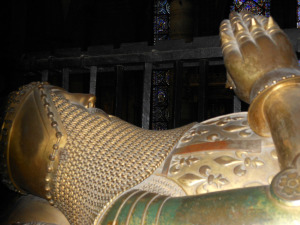 Tomb of the Black Prince, Canterbury Cathedral
Tomb of the Black Prince, Canterbury Cathedral
People are so interesting – and history is full of fascinating characters. In the middle ages we have so many choices. I immediately think of the Black Prince and Joan of Kent and Richard III and Anne Neville. In these instances, to learn about these remarkable men I believe we also need to get to know the women who helped shape their views and guided their counsel.
You have written books on the battles of Agincourt and Bosworth, what is it about medieval warfare that fascinates you?
Well, I have also written books on World War Two’s battle of Stalingrad and siege of Leningrad – and these events remain, for me, incredibly moving.
However, Agincourt and Bosworth are indeed fascinating: clashes that shaped our history and where the key turnaround happened very quickly, within hours, even minutes – and I will always be interested in them. When I wrote 24 Hours at Agincourt I was particularly struck by the headlong dash of Anthony, duke of Brabant (the younger brother of the duke of Burgundy). In his rush towards the battlefield – desperate to join the French army – he rode day and night, leaving behind most of his retinue and all of his armour. When he finally arrived at Agincourt he was accompanied by only a dozen men – and he was killed within minutes. Some applauded his chivalric idealism; others marvelled at his crass stupidity. And writing The Black Prince gave me the chance to bring to life three more extraordinary battles – Crécy, Poitiers and Nájera – so I am grateful for that as well.
How did you get involved in the ‘Looking for Richard’ project with Philippa Langley?
I got to know Philippa through the publication of my book Bosworth 1485 – Psychology of a Battle, which offered a different way of seeing Richard III – a mirror opposite of the picture presented by Shakespeare. Instead of removing Richard from the story of his family, the house of York, I placed him at the heart of it. Philippa had been writing a screenplay about the king, but had become stuck and was on the point of giving up. After we met, she rewrote the screenplay with my interpretation underpinning it, and then set out to visit the places that were significant in his life. We had said to each other that the only counter to the power of Shakespeare’s play would be to actually find the king’s physical remains. And that journey took Philippa to a social services car park in Leicester in the summer of 2004. Later, when Richard’s remains had indeed been uncovered, under the very spot where she had had her intuitive feeling, we wrote a book about it, The King’s Grave: the Search for Richard III.
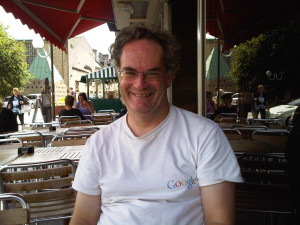 Michael Jones
Michael Jones
The Black Prince is a controversial figure these days – what made you want to write his biography?
I admire the Black Prince and feel that modern scholarship has sometimes become overly critical of him, losing sight of the ideals that governed his life and won the respect of his contemporaries. While there is a place for such criticism, I wanted to write a sympathetic biography – putting the man back into the context of his times.
If you could talk to any person from history, who would it be and what would you ask them?
That has to be Richard III on the fate of the Princes in the Tower.
If you had a time machine, what specific event would you like to go back and witness – and why?
It would be the final stages of the battle of Poitiers, where the Black Prince turned the tables on a numerically superior foe and captured the French king, Jean II, by mounting up and charging straight at his opponent. It cannot be equalled for sheer drama.
 What is your next project?
What is your next project?
I am working on a book about the beginning of World War Two – and will then return to the late middle ages and write an account of the last stages of the Hundred Years War.
I owe huge ‘thank you’ to Michael Jones for taking the time to do this fabulous interview.
I can highly recommend Michael Jones latest book, The Black Prince, which is out now and is available from Amazon.
Michael Jones is a fellow of the Royal Historical Society and member of the British Commission for Military History. He works as a writer, battlefield tour guide and media presenter. He is the author of Bosworth 1485: Psychology of a Battle, 24 Hours at Agincourt and co-author, with Philippa Gregory and David Baldwin, of The Women of the Cousins’ War; and, with Philippa Langley, of The King’s Grave: The Search for Richard III. He lives in South London.
*
Photos from Harrogate and the Black Prince’s tomb in Canterbury Cathedral ©2015 Sharon Bennett Connolly. Photo of Michael Jones with thanks to Michael Jones.
*
My book, Heroines of the Medieval World, is now available in hardback in the UK from both Amberley Publishing and Amazon UK and worldwide from Book Depository. It is also available on Kindle in both the UK and USA and will be available in Hardback from Amazon US from 1 May 2018.
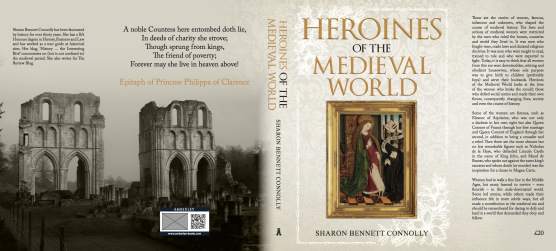
You can be the first to read new articles by clicking the ‘Follow’ button, liking our Facebook page or joining me on Twitter.
*
©2017 Sharon Bennett Connolly
Share this:





